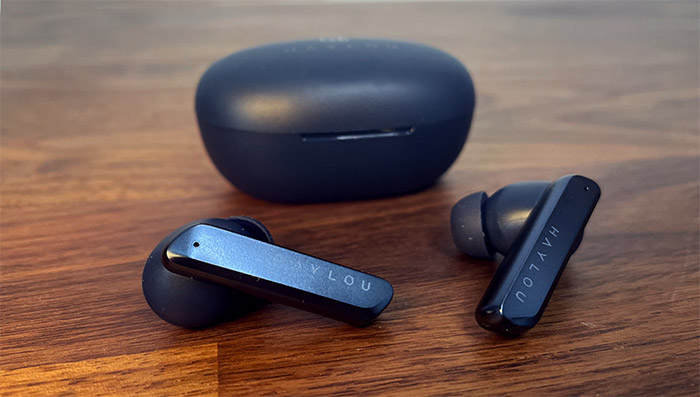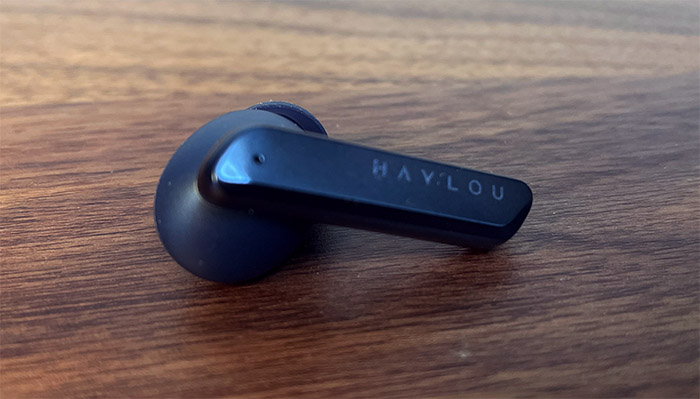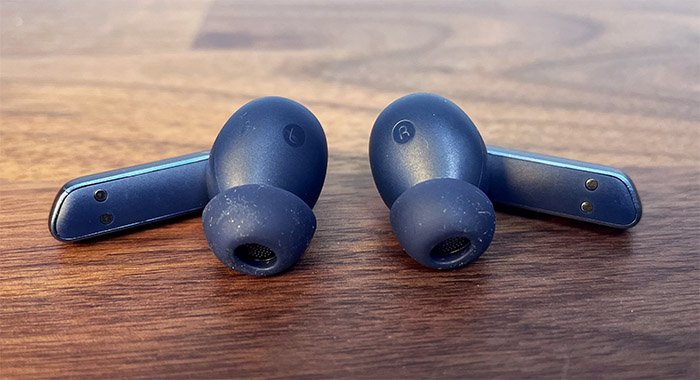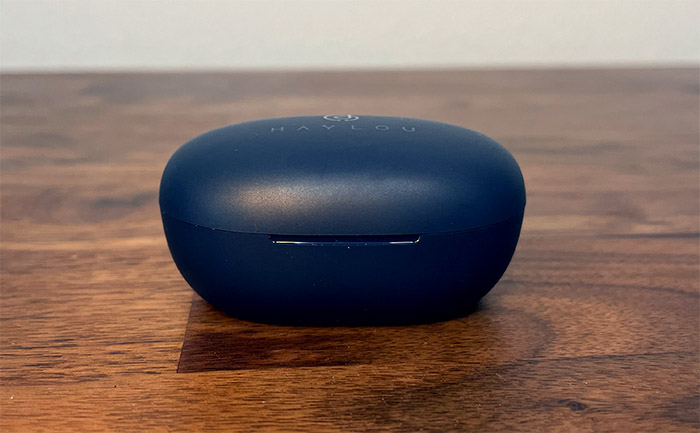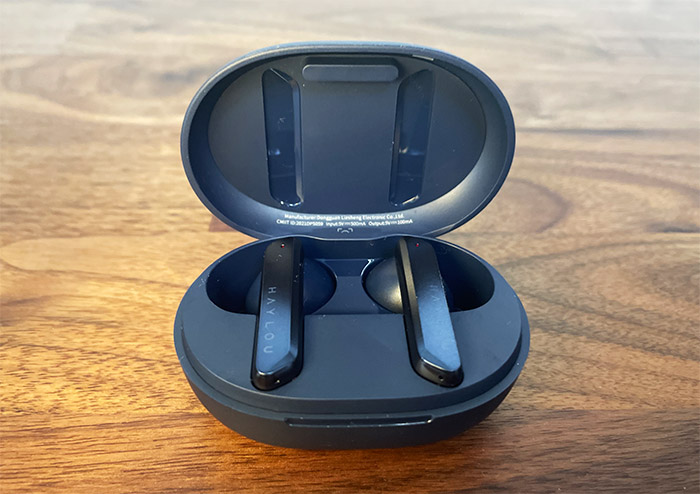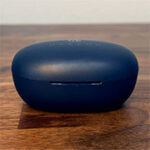The Haylou W1 are a pair of inexpensive TWS earbuds which offer a few interesting features that I have rarely seen at this price point. And I have noticed that the TWS earbuds market has lost a bit of momentum which is normal to happen after the initial novelty factor wore off.
| Haylou W1 | |
|---|---|
| Haylou.info | Check Product |
And that’s especially true in the sub-100 bucks market where the technological improvements have slowed down and have acquired a sort of uniformity among models. What happened was that the brands pretty much use the same hardware with very little tuning differences. So, seeing that the Haylou W1 use the Knowles balanced armature has ignited a bit of excitement considering that it’s possible to get more detail and a far better sound fidelity. Of course, Bluetooth is still not that great with High Fidelity sound, so the manufacturer has added support for aptX, which means that the sound quality can be actually really good at a fairly low price.
I have also noticed that there is no support for ANC (Active Noise Canceling), but does it matter? There are very few budget-friendly earbuds on the market that use ANC decently well (from which the SuperEQ Q2 Pro has been the most impressive), but in most other cases, it’s nothing more than a gimmick. So, I see the decision to focus on the new type of driver as being far better. That being said, let’s put the Haylou W1 to the test and see if they’re as good as they promise to be.
Build Quality and Design
The Haylou W1 are designed in a similar manner to the traditional earbuds, so there’s a pea-shaped main body and an elongated neck which improves the wearing comfort. I always thought that the manufacturer must have included the batteries or any other important hardware inside the neck of the earbuds, but no, it’s there just for the controls and as a stability point outside the ear. Even so, it’s amazing how much hardware they managed to add into such small devices – each Haylou W1 earbud measures 1.37 x 0.82 x 0.78 inches (3.5 x 2.1 x 2.0 cm). The earbuds are almost entirely covered by a dark blue matte finish, save for the elongated part which is covered by a glossy finish on the outer plastic section.
And yes, it does help add some aesthetic value to the overall look of the earbuds, but they also become a pain to remove from the charging case. Since there is no ANC, I was surprised to see that there was one microphone hole at the bottom of the elongated plastic part and one on the pea-shaped case. This is because the Haylou W1 does make use of the cVc 8.0 tech to reduce the environmental noise during a call. As I already mentioned, the controls are positioned on the narrow neck and it’s not really a good position.
Sure, there is no physical button, so simple taps is all you need to do to enable certain functions, but the space is not wide enough for me to properly hit the right space every time. So double taps will often end up being single taps. And, knowing their function, it gets annoying at some point. A single tap on any earbud will Pause / Resume a track and a double tap on the right earbud will move forward to the next track. As expected, a double tap on the left earbud will take us to the previous track. When you get a call, you can tap on any earbud to answer it or to end the call. To activate the assistant, triple tap on any earbud. Yes, there is no volume control and it’s a bit annoying to see this feature missing, especially since I have seen it on other inexpensive pairs of TWS earbuds (TaoTronics SoundLiberty Pro P10).
Are the Haylou W1 comfortable? Yes they are and that’s due to the specific shape of the earbuds which has been proven to be a bit better than the pea-shaped-only TWS earpieces (that’s how the traditional earbuds were designed). Furthermore, the fact that I don’t have to push a physical button does ensure that the ear canal doesn’t get irritated as often. All in all, I think 2-3 hours on a single sit is achievable with the Haylou W1.
What about during workouts and outdoor sports? I will say it as often as it needs to: don’t wear your earbuds while you’re doing outdoor sports because it’s very easy to lose them. That is, unless they have dedicated silicone hook tips; then it’s very unlikely that the earpieces will fall off. Also, I need to mention that the Haylou W1 is IPX4-rated, so the earbuds are protected from splashes of water – light rain or sweat won’t harm them, but don’t take them under the shower with you.
The Haylou W1 Charging Case
The charging case of the Haylou W1 is very similar in both design and looks to what I saw with the Wintory Air 2, both sporting compact cases. But, at a closer inspection, the case that comes with the Haylou W1 is different in a fundamental way.
It is very light weight and that’s because it’s made of plastic (while Wintory used metal). I get that this was done to keep the price low, but I am not sure that the case will have a very long life. The front of the charging case has three LEDs which are not that intuitive: one flashing LED means that less than 30 percent of battery if left, while three LEDs suggest that the battery is between 70 to 100% (two LED are between 30 and 70%). The good news is that there is a USB-C port on the rear side, so the device is up to the current standards. Inside the case, there are two dedicated areas for the earbuds and the attachment is done magnetically.
Internal Hardware and Connectivity
The manufacturer didn’t disclose the size of the driver, but we do know that the Haylou W1 uses the highlighted Knowles balanced armature. I was a bit surprised to see on the Haylou W1 since it’s usually IEM territory, but we were blessed with this great technology which can make sure that the sound reproduction is more detailed and with a better accuracy (we will see in the tests section). I also saw that the Haylou W1 uses the Qualcomm QCC3040 chip and it does support Bluetooth 5.2 which the manufacturer says, it should allow for a faster data transfer, a lower power consumption and a better stability.
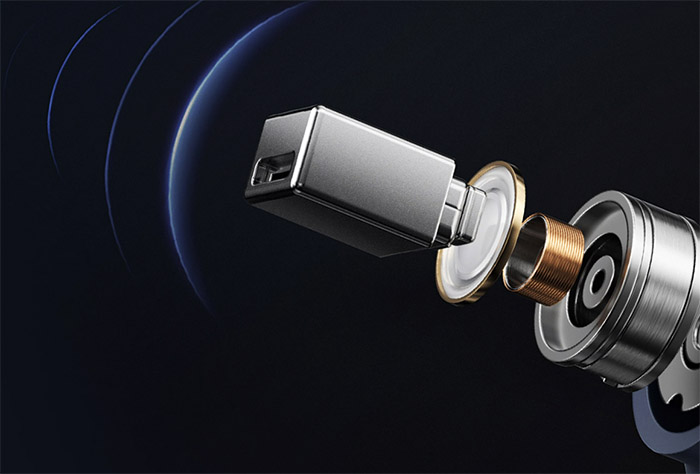
The first doesn’t really matter that much since the earbuds don’t require that much bandwidth to begin with. The second does make sense because I have seen that newer TWS earbuds that do support Bluetooth 5.2 have indeed a better battery life. The last one I assume means that the coverage is larger and it’s really not, the same 30 feet (with no line of sight) remain the standard. Lastly, there’s the support for aptX and, if you have compatible smartphones, it can improve the sound quality for music file with better formats.
Sound Quality
Since there is no Ambient mode or ANC (which as I already mentioned, is not really a bad thing at this price point), I went straight to the sound files and I started with the more technical tests first, to get an idea about what to expect from the drivers. First, I checked the driver quality and the test has revealed that the sweeping tone remained surprisingly clean for the most part with just a bit of buzzing when the frequencies got very low. Then, the driver matching test showed that the sound remained in the center regardless of the frequency of the sound. And it can be tricky with earbuds due to the way they’re inserted in the ear, but the Haylou W1 seems to have done a great job in this regard.
Afterwards, I played some binaural recorded music and I immediately noticed just how loud these earbuds can get, but even so, the sound doesn’t get distorted at a higher volume. Also, the soundstage is not very wide, but it feels very intimate, with the instruments clearly differentiated and the voices clearly defined – no overlapping or mudding. Surely, not every small sound was put into focus, as it happened with the AKG K240 or the OneOdio Monitor 80. Yes, yes, I am comparing apples to oranges, but it’s just to let you know that while with those headphones, everything felt ultraHD and with the Haylou W1, it seems that the earbuds focus on what’s important, while slightly ‘blurring the background’.
That being said, I checked some bass-focused songs and the first one is ‘Zhu – Faded’. The low bass is deep and feels full (clearly a bit boosted), there is good instrument differentiation, depth and clarity, but the voices, although loud and properly placed (not too recessed, not too forward), felt a bit echoey and a bit devoid of substance. Since I also saw some slight boost on the treble as well, I think that the mids are a bit neglected, but, considering the price tag of the earbuds, they still sound far better than most of its competitors. While listening to ‘System Of A Down – Mr Jack’, I noticed that the bass guitars definitely dominated the scene, the drums were decently differentiated and the voices were decent (again a bit shallow). The song itself is busy, but the Haylou W1 did its best at keeping things clear.
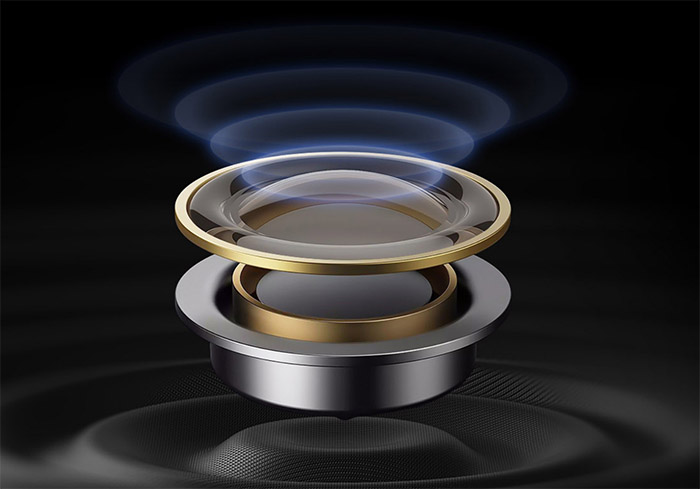
The mid-bass-focused ‘Morph The Cat by Donald Fagan’ actually sounded excellent, the instruments blended in nicely, the clarity is great and the voice was decently reproduced. Listening to ‘SOFI TUKKER – Déjà Vu Affair’, I noticed that the boosted bass is clearly the main character here, clear and concise, but it doesn’t bleed on other frequencies, which is great. Moving on to some other types of songs (more mids-focused), I played ‘Vance – She Burns’ and the artist’s voice sounds a bit echoey (again), the instruments are clear, but since the voice is the star here, the song is not as emotional as with other earbuds or headphones, but it’s still beautifully reproduced nevertheless. Lastly, I listened to ‘Guns n Roses – Paradise City’ and Axel Rose’s voice wasn’t too bright, everything was decently reproduced and the combo between some bass and the clear treble was very satisfying.
Call Quality
The call quality on budget-friendly TWS earbuds can be decent, especially in quiet places, but they very rarely (and I mean it) perform well in crowded areas. And it’s not that I don’t hear the caller, since the passive noise isolation does its job decently well, so I hear the other person clearly. It’s just that my voice is blended with the background. The Haylou W1 does have two microphones, one closer to my mouth and it work well when I am at home, with no street sounds.
But, it’s not going to be that great in a coffee shop, where people are talking, cars are passing by and so on. The other person will hear you, but it’s just not going to be an overly pleasant experience. Again, this is the case with most earbuds and the only device that performed well was a pair of headphones from Sony (WH-1000XM3) that costs many times more than the budget-friendly earbuds that I usually test.
Battery Life
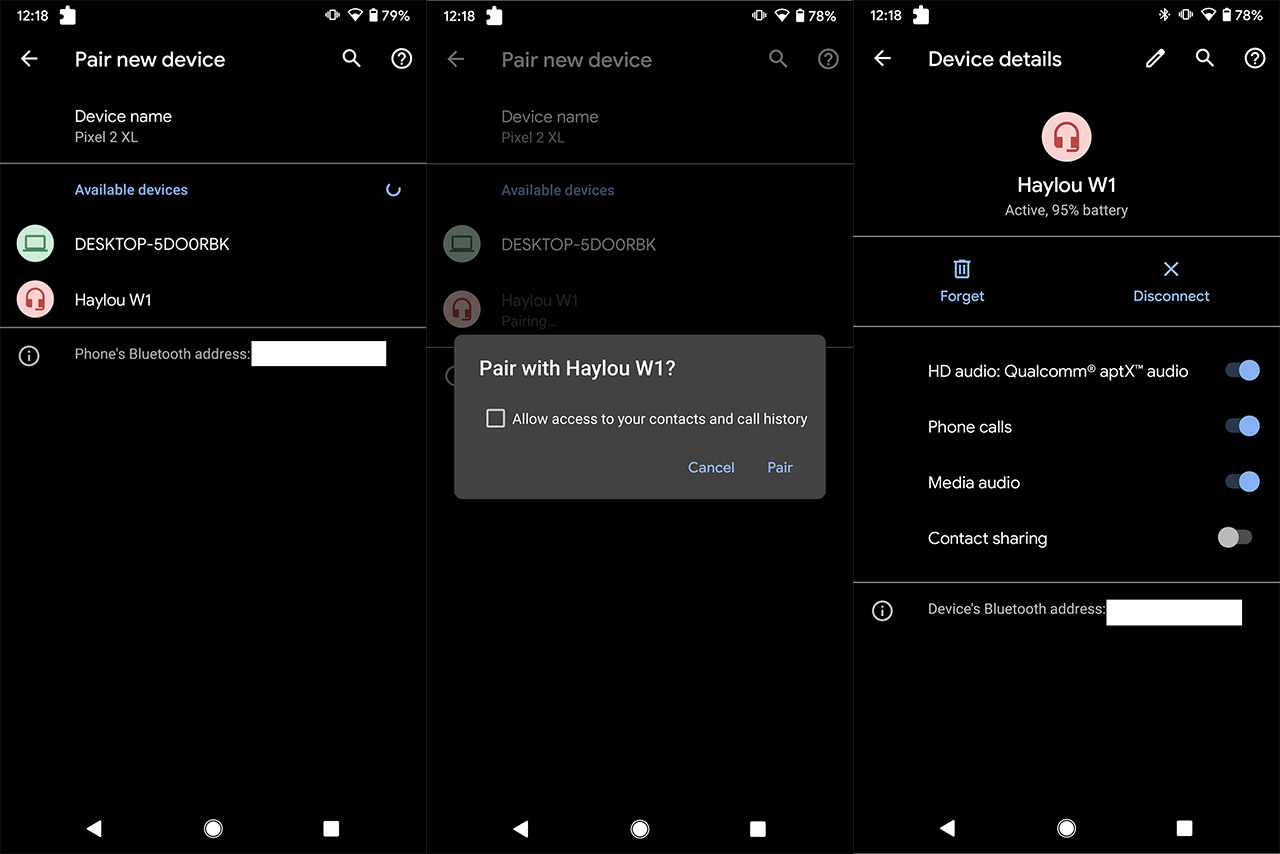
Since the iPhone doesn’t support aptX, I took out the Pixel 2 XL from the box and, after making sure that the Haylou W1 was indeed paired, showing the support for the aptX codec, I raised the volume to 70% and played some music up until the battery went from 100% to 0%. And it happened after 5 hours and 20 minutes which is very close to the advertised 6 hours (that were probably observed at a lower volume level).
The Conclusion
Is the Knowles balanced armature truly able to make a difference? The answer is yes, the sound quality on the Haylou W1 is among the best that I have seen in this price range. It’s not perfect by any means, but the slightly boosted bass and treble do contribute to a pleasant more-mainstream sound. Additionally, the earbuds are comfortable to wear (although very slippery) and the battery life is good, so if the Haylou W1 fit your budget, it’s worth it to check them out.

Mark is a graduate in Computer Science, having gathered valuable experience over the years working in IT as a programmer. Mark is also the main tech writer for MBReviews.com, covering not only his passion, the networking devices, but also other cool electronic gadgets that you may find useful for your every day life.

